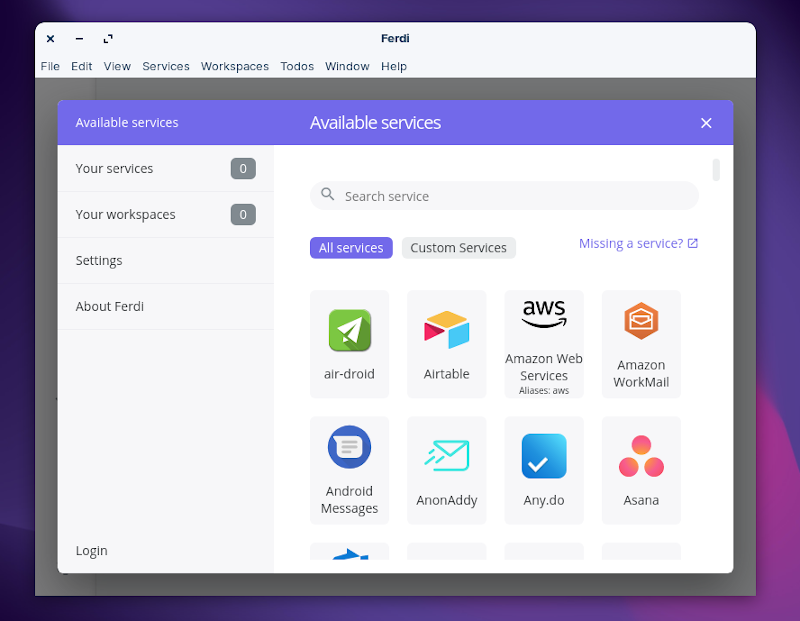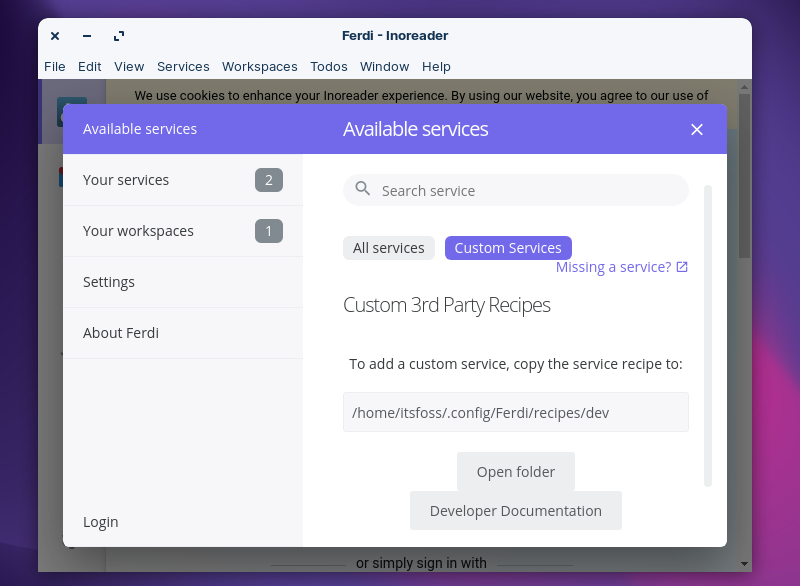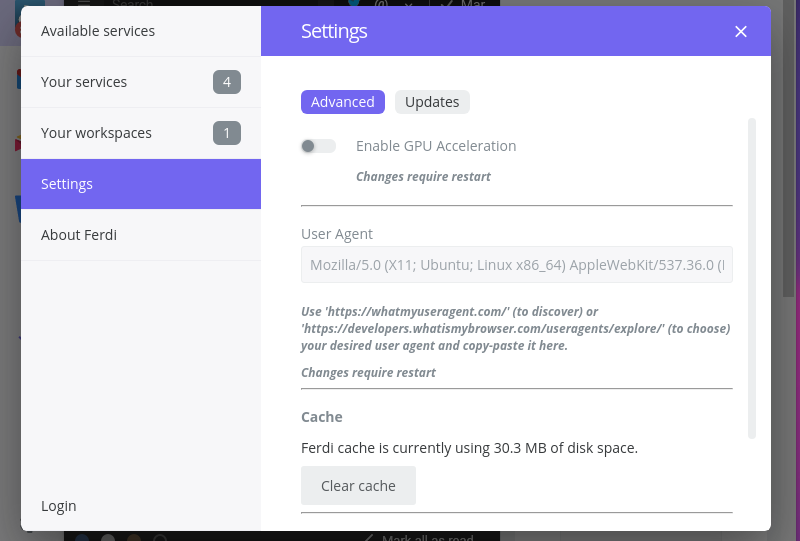Brief: Ferdi is a promising open-source application with more free features as an alternative to Franz and Rambox. Let us explore more about it.
A single application to help you manage multiple services comes in handy when you do not want to do everything on your browser. While technically, you can, it may not be the most organized way of doing things.
Hence, options like Rambox and Franz are pretty popular cross-platform solutions to sign in to several services and access all of them at a glance.
Even though they both are available for Linux (and we’ve covered them separately), they offer limited features for free.
In contrast, Ferdi is a fork of Franz offering many premium functionalities for free while aiming to provide a better experience.
Ferdi: Dabble With Multiple Applications in One Place

Ferdi is a free and open-source application that lets you add multiple applications, including various messaging services, in one place.
It also lets you customize various aspects of the application and its behavior. If you like applications like Rambox and Franz, you should explore more about Ferdi.
Features of Ferdi

You can find tons of features available without needing to pay a premium. Here, I shall highlight some key features:
- Cross-platform support (Linux, Windows, and macOS)
- Wide range of messaging services included (Slack, WhatsApp, Element, etc.)
- Supports signing in with Franz account
- Ability to password-protect messages
- Option to use your custom server
- Quick to-do list access with the option to use Franz Todo, Todoist, Microsoft To Do, Any.do, and more.
- Tweak performance by unloading applications when not in use (Hibernation)
- Private notification to hide your messages
- Do not disturb mode support
- Dark mode with the option to toggle every app added separately
- Cloud sync
- No restrictions on the number of accounts
- Ability to set up a proxy and connect through it
- Add multiple workspaces
Thoughts on Using Ferdi

Just like Rambox and Franz, Ferdi won’t shy away from consuming a good chunk of your resources. So, you need to keep in mind whether you have enough memory (RAM) to have several applications active within Ferdi.
It is good to have the option to unload applications when not in use. So, in case you are low on resources, you might want to utilize the Hibernation option.

Ferdi also offers some advanced options like GPU acceleration, universal dark mode, privacy toggles, appearance customization, and more. You can even add custom services that you do not find listed.

Overall, you get many features and choices when it comes to Ferdi. You should be able to organize multiple applications efficiently with the available set of options.
Installing Ferdi in Linux
Ferdi offers multiple packages for easy installation on Linux. You can find a DEB/RPM package for Ubuntu/Fedora, an AppImage file for all other Linux distributions.
They also provide a snap package along with the ability to install it via AUR. So, you have plenty of options to get it installed on your Linux computer.
You can explore their GitHub page and head to its releases section to download them or visit the official site.
Have you tried Ferdi yet? Does it serve the purpose of replacing Franz or Rambox? Is it better? Share your experience in the comments down below.

